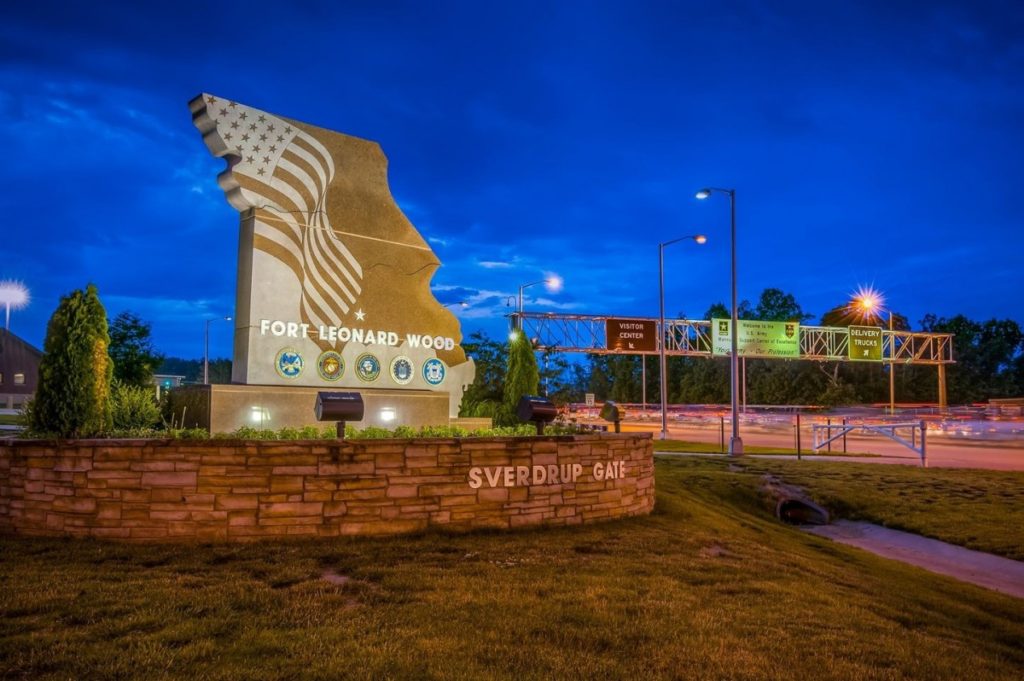Brian Hill
FORT LEONARD WOOD, Mo. (June 19, 2020) — Nine Soldiers from Fort Hood, Texas, are getting vital Urban Search and Rescue training here as the Army continues to find ways to train the force while simultaneously mitigating COVID-19 risks.
Many health and safety issues had to be worked out before Soldiers could travel here for training, to include travel arrangements, housing and classroom spacing requirements and daily health checks for both the students and instructors.
According to Jay Rutherford, Urban Search and Rescue Training Department chief, the Maneuver Support Center of Excellence Directorate of Training and Doctrine was briefed on the mitigation strategy to comply with Defense Department policies and orders from Maj. Gen. Donna Martin, MSCoE and Fort Leonard Wood commanding general. Approval was granted and the US&R training department will train five courses this year.
“We separated the living conditions in the barracks, we got the classroom set up where they’re all six-feet apart,” he said. “All the mitigation strategies that we presented are in effect right now and working well.”
The Soldiers attending the 38-day Urban Search and Rescue course spent two weeks in quarantine. Their journey here, in a pair of rental vans, was regulated so as only to allow stops for fuel and food, and then only curbside or drive-thru service could be used.
“They provided us everything we need to make sure we’re comfortable. Once we got here, they had everything set up for us,” said Pfc. Magic Dowe, who’s been in the Army just nine months. “They met us at the gate. It was really accommodating – an easy process.”
While attending the course, the Soldiers are learning rescue techniques for a variety of scenarios, including rope, confined space, trench, structural collapse, vehicle and machinery rescue. They’re learning how to tie knots, set up rigging systems and prepare patients for evacuation. Upon successful completion, each Soldier gains college credits and certifications they can use in the civilian world as well as in the Army.
Rutherford said all nine Soldiers passed their first test over what’s called the Common Core, and they have moved into rope rescue training.
Spc. Breanah Brooks said the entire class is working together to study the material.
“Learning the steps to everything is difficult,” she said. “We all get together, though – we work it out.”
Dowe completed Basic Combat Training and Advanced Individual Training at Fort Leonard Wood five months ago, and he said he’s enjoying a different training experience here this time.
“It’s not your typical knots,” he said. “It’s really great information. It takes time – it’s something that you really have to pay attention to. You do it right and the end goal is to save lives.”
Fort Leonard Wood is the only U.S. Army installation where urban search and rescue courses are taught.
“It really gets hectic after this (class),” Rutherford said, noting that the annual training load for the course is 350 students. “We’ll start picking up again. We have four more classes this year and then we’ll have everything closed out and all the students home before Thanksgiving.”

-30-
About Fort Leonard Wood
Fort Leonard Wood is a thriving and prosperous installation that has evolved from a small basic training post more than 75 years ago to a premier Army Center of Excellence that trains more than 80,000 military and civilians each year.
Fort Leonard Wood is home to the U.S Army Maneuver Support Center of Excellence and three U.S. Army schools: the U.S. Army Engineer School; U.S. Army Chemical, Biological, Radiological and Nuclear School; and the U.S. Army Military Police School. In addition to training engineer, CBRN and military police specialties for the Army, Fort Leonard Wood also provides gender-integrated in-processing and Basic Combat Training for new Soldiers.
Fort Leonard Wood also hosts and trains with the largest Marine Corps Detachment and Air Force Squadron on any Army installation as well as a large Navy construction detachment.
More information about Fort Leonard Wood is at: https://home.army.mil/wood/index.php/about/mission









